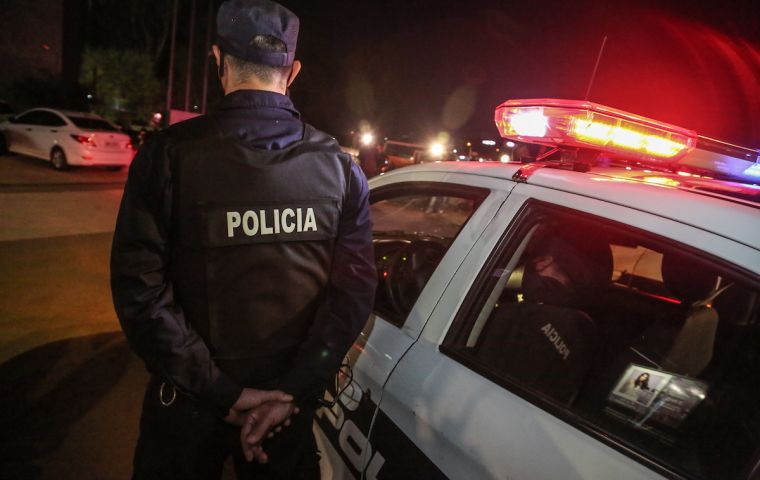MercoPress. South Atlantic News Agency
Uruguay faces a wave of violence that could mean a homicide record – government blames drug trafficking
 The wave of homicides has led the government to “redouble” its efforts to fight an unprecedented level of drug violence in the country
The wave of homicides has led the government to “redouble” its efforts to fight an unprecedented level of drug violence in the country Uruguay has been experiencing dark hours in terms of homicides in recent days. In the first quarter of this year, there were 96 homicides in a country of some 3.5 million inhabitants, 33% more than in the same period of 2021 and a figure that marks a trend that, if maintained, would mean an annual homicide record in the southern country.
The Uruguayan Ministry of Interior presented last April 8 the crime figures for the months of January, February and March 2022 and these show that there was a 33% increase in homicides compared to last year.
The situation in the country worsened in the last week and a half, a period in which 14 bodies have been found. The last four, between Tuesday and Wednesday, in the Montevideo neighborhood of Peñarol. Three of the bodies were burned and one of them was also dismembered, a level of violence unknown in Uruguay.
The higher number of homicides “is going to be a motive for analysis because that is where the ministry is going to dedicate itself in the next quarter, to have a reinforcement, a greater presence, a deep analysis to combat them,” said Interior Minister Luis Alberto Heber.
The wave of homicides has led the government to “redouble” its efforts to fight an unprecedented level of drug violence in the South American country, which in recent years has become an important drug transit point.
This increase in violent deaths goes hand in hand with Uruguay's changing role in the global drug trafficking market. The country has in recent years become a transit point for cocaine traveling from South America to Europe and Africa, according to the international organization Insight Crime.
Heber said on Wednesday that he will “redouble police efforts in the fight, without backing down an inch” after meeting with President Luis Lacalle Pou.
The minister asked the president to include in the budget an item to increase the number of police posts, “more vehicles and some more drug prosecutors” to confront the violence resulting from “the confrontation of drug gangs”.
In addition, at the end of April Montevideo experienced one of its most macabre episodes.
In the Montevideo promenade, that neuralgic point where the Uruguayan capital touches the waters of the Rio de la Plata, first a torso appeared, then a head and later the limbs, all of the same person, appeared in different points of the city in little more than a week.
For the opposition, Heber is “not measuring up,” said opposition Frente Amplio senator Enrique Rubio on local television.
Homicides on the rise
Sociologist and researcher Leonardo Mendiondo estimated that the measures to reinforce police and increase patrols will not serve to stop drug trafficking crime.
”This is not solved with more police and more vehicles, but more understanding of the crimes through the investigation of the modalities of the crimes (...) more iron fist and more repression will not help to get out of where we are,” he told AFP.
So far in 2022 there were, in addition to the homicides mentioned, 6,463 robberies, 30,444 thefts, 272 cattle thefts and 10,141 acts of domestic violence, according to data from the portfolio presented at a press conference. The figures represent an increase of 11.20% in domestic violence and 3.20% in thefts compared to the previous year. On the other hand, robberies decreased by 6.30% and cattle theft by 16.30%.
Montevideo's newspaper El País published a document from the Ministry of Public Health detailing the number of records of firearm injuries based on hospital admissions.
The report was published on April 12, 2022 and states that in 2017 there were a total of 505 people injured by firearm (both from external aggressions and self-inflicted injuries). In 2018 there were 659 cases of firearm trauma, in 2019 there were a total of 666 people and in 2020 there were 647 people who were hospitalized for this reason. This gives a result of 2477 cases in a total of four years. The portfolio did not provide data for 2021 or so far in 2022.





Top Comments
Disclaimer & comment rulesCommenting for this story is now closed.
If you have a Facebook account, become a fan and comment on our Facebook Page!